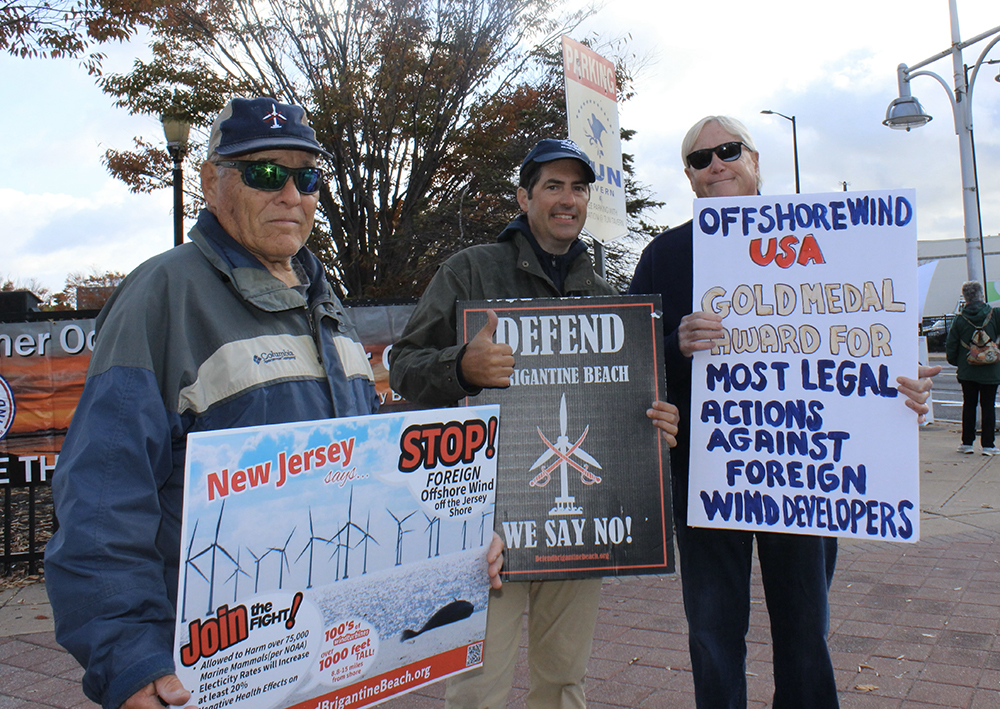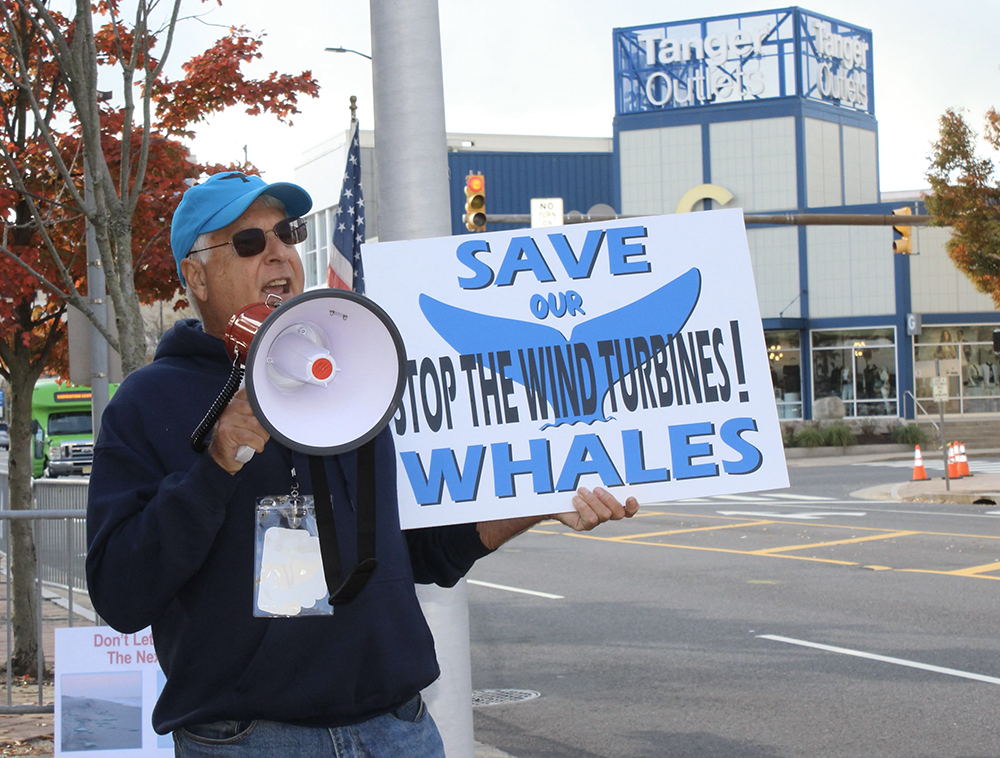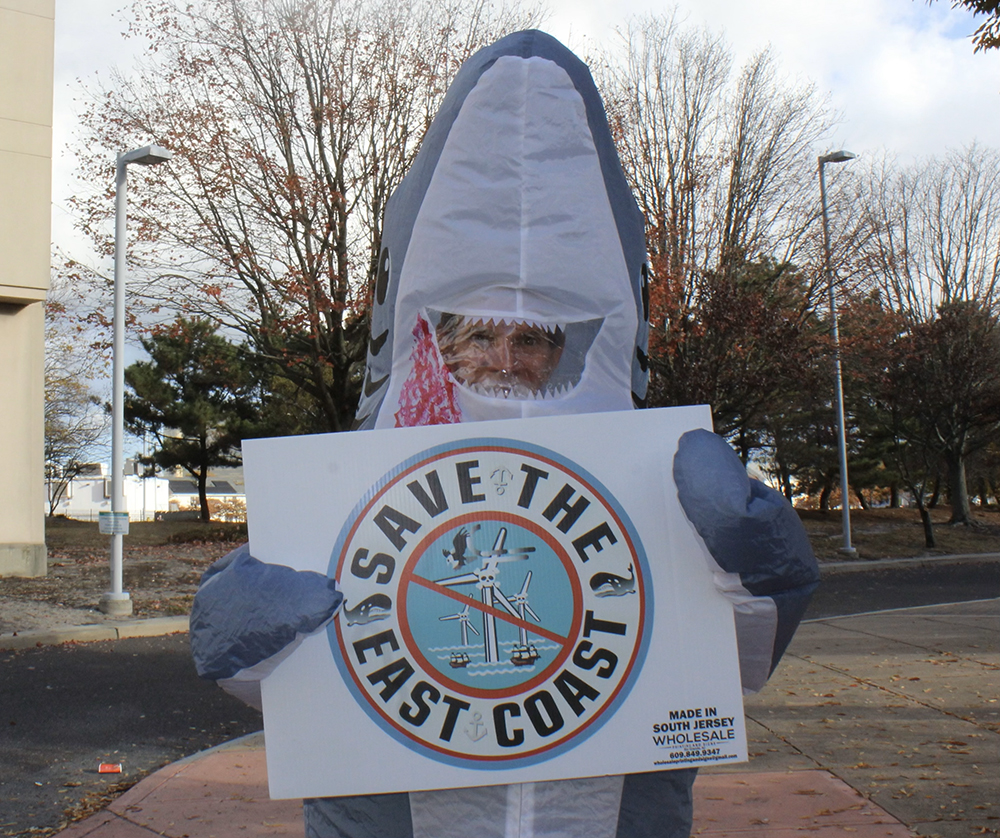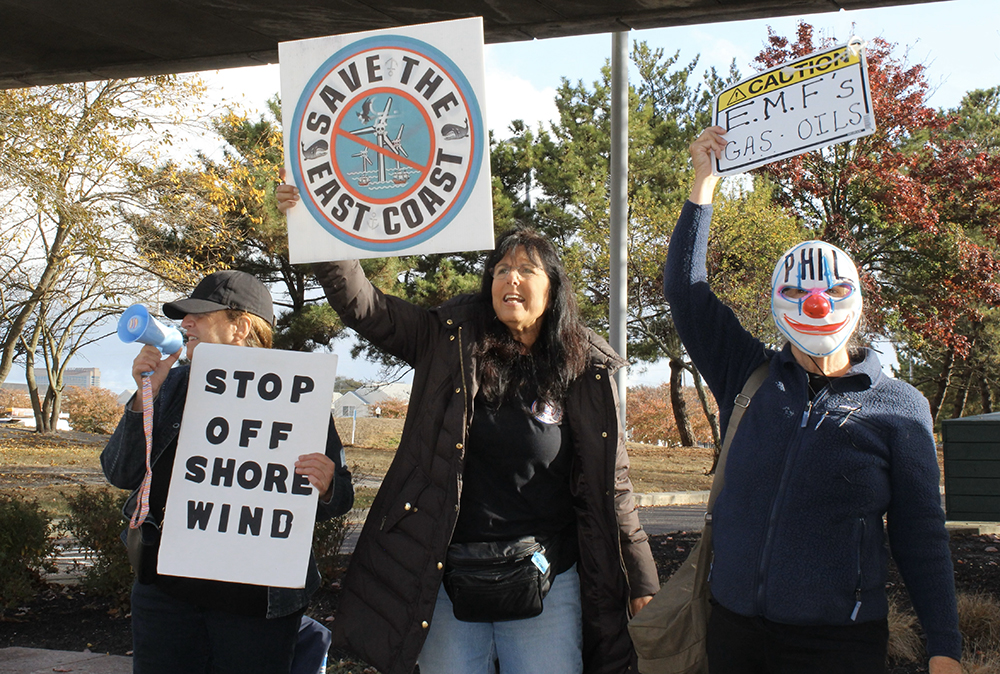By Julia Train
On Tuesday morning, several groups against offshore wind gathered outside of the Atlantic City Convention Center with their anti-offshore wind signs.
They were protesting outside of the Offshore WINDPOWER 2024 Conference and Exhibition, a conference which gathers top developers, government officials and key stakeholders across the offshore wind industry.
The fight against offshore wind has been a prevalent issue along the southern New Jersey coast for the past five years.

The background
In 2019, the New Jersey Board of Public Utilities (NJBPU) chose Ocean Wind, an offshore wind energy project proposed by Orsted and backed by Public Service Enterprise Group (PSEG), to enter negotiations for a 20-year offshore wind renewable energy credit for a wind farm with a capacity of 1,100 megawatts.
Orsted had mapped out two of these projects: Ocean Wind 1 and 2. However, the projects have since been scrapped.
On Aug. 14, the New Jersey Board of Public Utilities formally vacated all of its orders that approved Orsted’s offshore wind projects. The Danish company said inflation, rising interest rates and global supply chain issues were behind the decision.
The two projects were planned to be built approximately 15 miles off the coast of Atlantic City, and would have generated over 2,200 megawatts of electricity to help New Jersey achieve its goal of 100% clean energy by 2050.
Defend Our Beaches, formerly known as Defend Brigantine Beach, hopes Orsted’s decision is partly due to the various lawsuits the nonprofit filed against them and the State of New Jersey.
While Orsted pulled away, Atlantic Shores is still moving forward.
Officials at the U.S. Department of the Interior announced that the Atlantic Shores South project received final approval Oct. 1. This project, which encompasses two leases, is substantially larger than existing wind energy sites in New Jersey, with plans for up to 197 wind turbine locations situated about 8.7 miles offshore.

Elizabeth Klein, director of the Bureau of Ocean Energy Management, the federal agency that oversees offshore energy leases, said Atlantic Shores South would generate enough electricity to power nearly 1 million homes.
“Atlantic Shores is thrilled to receive approval to build our first two projects and deliver sufficient clean power to serve one third of New Jersey households,” Joris Veldhoven, Atlantic Shores Offshore Wind’s CEO, told NJ Spotlight News.
Construction is scheduled to start next year and the project could serve about one-third of the state’s population, Veldhoven said.
New Jersey Democrats, including Gov. Phil Murphy, praised the approval of Atlantic Shores.
“Offshore wind will strengthen our state’s economy through supply chain investments and good-paying, union jobs,” Murphy said.
Meanwhile, Republicans, like U.S. Rep. Jeff Van Drew, are opposed.

The impact on life
On Aug. 13, Van Drew hosted his third public forum so far on the expansion of offshore wind off the Jersey Shore in Brigantine.
Van Drew was joined by local officials, experts and community members to discuss the broader implications of offshore wind energy, including its costs and the overall impact on the state’s coastal environments.
“This is not the five windmills that you see coming into AC,” he said. “We are talking about hundreds, if not thousands, of wind turbines over 1,000 feet tall that have substances that can leach into our oceans. We are going to decimate our fishing industry, which is the third largest industry in the state, but these people don’t care.”
The turbines’ impact on the state’s fishing industry isn’t the only concern. Also on the list is how it will affect tourism, marine life and electricity prices.
“No matter where you live in New Jersey, if these turbines are constructed, you’re going to see a tremendous increase in your electric bills,” said Kate Finnegan, Defend Our Beaches president.
Finnegan said that one of the reasons Atlantic City Electric bills have increased this summer is because some of the subsidies that have been given for offshore wind are starting to show up.
“No one really knows how much it’s going to cost, and it’s very intermittent. When the wind doesn’t blow, it isn’t effective,” she said.
A spokesperson for Atlantic City Electric, however, said that there aren’t offshore wind or related charges in their rates.
“Atlantic City Electric does not have any wind generation transmission plants currently in-service, therefore there is not any revenue requirements for our customers,” the spokesperson said.
A prominent reason given to deter the projects is how the turbines will affect marine life, specifically whales.
In November 2023, Save LBI, another group against the turbines, published “The Evidence That the Offshore Wind Energy Vessel Surveys are the Cause of the Recent New Jersey Whale & Dolphin Deaths.”
In that report, several pieces of evidence were gathered, listed and explained.
The group claims that there have been recent unprecedented spikes in whale deaths that began when the number of survey vessels increased, and that those vessels disturb the whales’ behavior, leading to serious harm and mortality.
The group says the concerns are “not meaningfully addressed in survey approvals, nor is the cumulative impact of multiple vessels operating concurrently in the same area.”
In the report, the group mentions that “the responsible agencies have summarily dismissed this relationship with various claims.”
According to the International Fund for Animal Welfare, a global nonprofit, the leading cause of North Atlantic whale deaths is when ships and boats strike them.
Whale deaths are not linked to wind projects, according to the National Oceanic and Atmospheric Administration (NOAA).
“At this point, there is no scientific evidence that noise resulting from offshore wind site characterization surveys could potentially cause whale deaths,” NOAA’s fisheries division says on the “Frequent Questions” section of its website.

Benefits and drawbacks
Supporters of wind energy highlight several benefits, including reduced reliance on oil and gas, job creation and economic advantages for local communities and the provision of cleaner energy.
However, according to the Office of Energy Efficiency & Renewable Energy, the disadvantages include competition with other low-cost energy sources – its viability can vary in less windy locations, wind farms produce noise, can affect the visual landscape and impact wildlife.
“A lot of the perception is that it’s going to do a tremendous deal for climate change. The research that we have done shows that the sea levels have always been rising, and it’s not really going to have that much effect on climate change,” said Finnegan of Defend Our Beaches. “It’s believed to be clean and green energy. And on the surface, it sounds like a great plan, but because it’s so expensive and intermittent and not terribly effective, you have to consider, maybe there are other sources of green energy that are better.”
She named solar and nuclear energy as alternatives.
Julia is a recent Rider University graduate, where she studied multiplatform journalism and social media strategies. In her spare time, she enjoys reading, trying new coffee shops, photography and the beach. She can be reached at juliatrainmedia@gmail.com or connect with her on Instagram @juliatrain













I have been against the wind turbines since they first came to my small town in wyo.,now the’re everywhere.Not too many eagles make it,either.There was a time the deer would come in 20+, across my property weekly. Every once in awhile a few head come around, this time of year.You can see many eagles piled up on the ground,below the turbines.GUT WRENCHING.Pres. Trump will help because he said he didn’t like them,too.